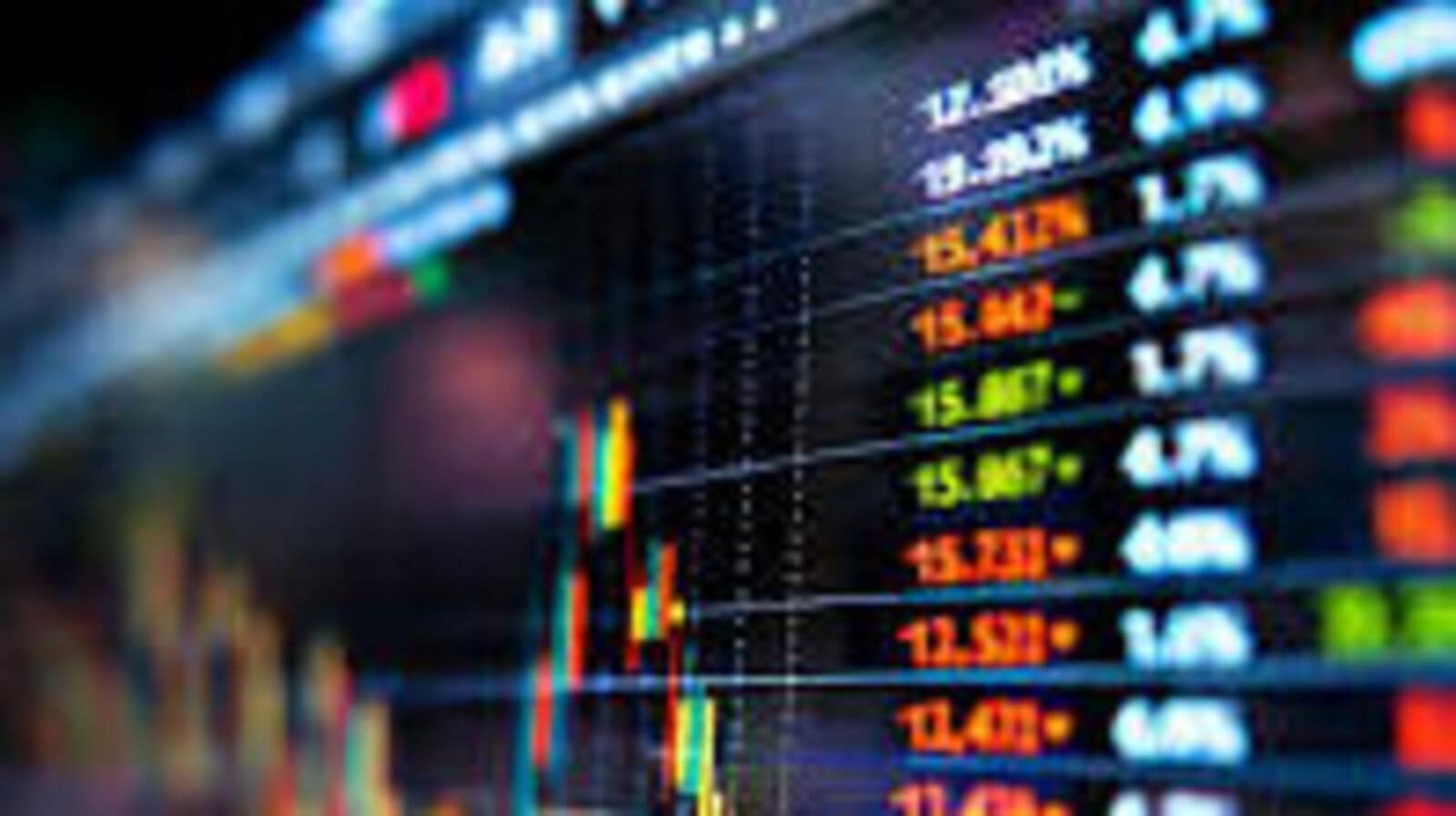(Repens the story of April 4 with no change in text or title)
Wall Street ‘Fear Gauge’ shuts down at a 5 -year high
Nasdaq enters the bear market as more than 10% stock in two days
Euro Volatility Spikes, Tariff News among Dollar swings
FX and bond market volatility jumps
Swap on American Sovereign Credit Default Growth
US Treasury Yield is safe because buying safe havan increases
New York, 4 April (Reuters) – Regarding the decline of President Donald Trump’s widespread tariff, alarm held global financial markets, at a five -year high level of fear of Wall Street while financial authorities expressed concern about shock and economic growth.
Tills were erased from the values of the stock market as investors said they were afraid of further recession risk. The US stock markets declined by more than 10 percent in two days, now with a bear’s natural composite in the market, as China imposed fresh tariffs on all American goods, increasing the concerns of an extended global trade war.
A senior financial executive said that Tariff weighed a potential economic loss to “Shelshock” among business leaders. Another executive described a specific industry response to announcements: “Oh my God, terrible!” The two officials refused to discuss the policies.
CBOE volatility index, an alternative-based gauge of stock investors, anxiety about the near-market approach, the most closed since April 2020, ended 15.29 points to end at 45.31 since April 2020.
“A vix on 40 is a sign of fear to ensure,” said the portfolio manager of the rational equity Armor Fund who Tigay.
“Usually you see a 40 when something happens more than normal sales … some type of credit risk, margin risk, something that can cause a fingering that can cross and cross other asset classes,” Tigay said.
Investors, who have suffered from a sharp sales this year – S&P is about 14% below for 500 years – is monitoring the instability gauge as an indicator of market stress.
Jeff O’Coner, head of market structure in Liquidate, said, “There is a possibility of rating markets for the future of tariff uncertainty.”
Friday brought the 6% S&P 500 drop index close to the 7% circuit breaker threshold, which would have triggered a 15-minute trading stop, aimed at stopping panic selling to avoid the stock-market spiral at the bottom.
Trump’s team has depicted market disturbance as an adjustment that will prove beneficial in the long run, Treasury Secretary Scott Besent added the saleoff to the emergence of China’s Deepsek Artificial Intelligence Tool earlier this year.
From the celloff large-caps to the small-cap stock hemorrhage, everything was widespread. An index of the expected stock market correlation closed at a 2 -year high on Friday, underlining the idea of the investors that the guarantee in the stock sink would continue.
On Friday, no market was spared jumping into anxiety.
In the currency markets, the euro shot a one -month inherent instability shot to a two -year high of 10.45 as the common currency fell nearly 1% against the dollar.
Greenback, which declined by six months over a basket of currencies on Thursday, has become here and there due to the fast flowing news on Trump’s tariffs and other countries.
“FX Pricing has swung wildly and the dollar movement has been in contrast to smooth,” said Helen, director of trading at Monex USA in Washington.
Meanwhile, the US Treasury yield fell, with a yield on the benchmark US 10-year-old Treasury Note, fell to a six-month low of 3.86%, slipping below 4% widely seen.
Buying the safety havan of the treasury has been sent to yield, which moves rapidly down in recent weeks, moves forward in prices, is inspired by worries about recession and transforms expectations about the potential Federal Reserve Policy.
Federal Reserve Chairman Jerome Powell said on Friday that Trump’s new tariffs “are bigger than expectation” and economic fall, which would also feature high inflation and slow growth. Trump on Friday called for Powell to cut interest rates, saying that there was a “right time” to do so.
Investors do not expect to reduce quickly.
“The market is going to be under pressure in the market until the evidence of policy or real dialogue is really changing,” said Chief Fixed Income Strategist Kathy Jones at Schwab Center for Financial Research in New York.
The US high yield corporate bonds are spread, an important indicator of financial conditions, increased to 401 base points on Thursday, since November 2023, his highest, global markets have been swooped.
According to LSEG data, the insurance for the US government’s loan has climbed the short-term cost of the exposure, with the US six-month credit default swap (CDS)-a market-based gauge-widening of a default of a default to 47.48 base points.
Other indicators of market tension reflect the nervousness that brings high volatility, but there is no sign of complete gabulant yet.
The American two-year swap spreads-two years of swap rates and two years of treasury yield were determined for their largest one day contraction since the inter-March 2023 regional banking crisis.
Nevertheless, the equity remained at the center of the market turmoil.
The global hedge funds and the Leward Exchange-Tradeded Fund (ETF) on Friday dumped customers at a breakcation speed, according to bank notes, at a breaknake speed.
JP Morgan said in a note that instability targeting portfolio between $ 25 billion and $ 30 billion in equity to sell in the coming days, as they open positions to reduce the risk.
JP Morgan said in a note, meanwhile, retail investors on Thursday bought $ 4.7 billion after a strategy of “buying a dip”, which was at the highest level in the last decade.
Mark Newton, head of the technical strategy in Fundstrat Global Advisors, said, “Given the elephant in the tariff”, which does not lead any conversation yet, is almost impossible to call a lower call without evidence. ” ,
